Distribution Records
PDF
Vetting Levels |
|
Adult phenology:
High Mountains (HM) ≥ 4,000 ft.
Low Mountains (LM) < 4,000 ft.
Piedmont (Pd)
Coastal Plain (CP)
Click on graph to enlarge
|
 |
|
| synonym | |
| taxonomic_comments |
One of three species in this genus that occurs in North America (Cokendolpher and Holmberg, 2018), two of which have been recorded in North Carolina |
| species_comment |
The type locality is Mt. Mitchell (Crosby and Bishop, 1924). All known records are from North Carolina (although it likely occurs in neighboring Tennessee). |
| id_comments |
Both species of Odiellus are easily identified by the trident of spines at the forward margin of the cephalothorax (see Structural Features below). In nubivagus, most of the dorsal surface of the cephalothorax and the central area of the abdomen are dark brown to black, bordered by pale silvery areas; the legs and sides of the abdomen are also darkly colored. In O. pictus, the ocularium and central figure are lighter and more mottled with brown (Crosby and Bishop, 1924; Cokendolpher and Holmberg, 2018). The femur on leg II is tan and blotched with dark brown in pictus and distinctively ringed with brown distally; the femur of nubivagus has little or no distal ring (see illustrations and description in Cokendolpher and Holmberg, 2018). |
| total_length |
4.76 mm, males; 5.76 mm, females (Crosby and Bishop, 1924) |
| structural_features |
Similar to O. pictus in possessing a trident of spines in front of the ocular tubercle at the forward edge of the cephalothorax. Crosby and Bishop (1924) describe and illustrate several differences in the spines and processes on the chelicerae and palps that distinguish nubivagus from pictus. |
| silk_web |
|
| fld_guide_descriptions |
|
| online_photos |
|
| prey |
|
| predators |
|
| behavior |
|
| distribution_reference |
Crosby and Bishop (1924) |
| technical_reference |
Crosby and Bishop (1924) |
| adult_id | 1 identifiable by photo 2 identifiable by photo of specific features and/or supplementary info 3 identifiable from specimen only |
| abundance |
Crosby and Bishop (1924) described this species as abundant on rocks along the trail to the summit of Mt. Mitchell, with a number of mating pairs observed |
| distribution_comments |
The only recorded locations for this species are Mt. Mitchell, Grandfather Mountain, and Clingman's Dome, all in North Carolina (Cokendolpher and Holmberg, 2018) |
checklist_mt_high
>=4,000 ft. | |
checklist_mt_low
<4,000 ft. | |
checklist_pd
Piedmont | |
checklist_cp
Coastal Plain | |
| habitat |
Crosby and Bishop (1924) recorded this species as abundant on rocks along the trail to the summit of Mt. Mitchell. Hall and Sullivan (pers. obs., 2019) observed a number of individuals on the sides of cabins and other outbuildings at the maintenance area located along that same trail. Records from both Mt. Mitchell and Clingman's Dome were made at high elevations in Spruce Fir Forests: 6683' at Mt. Mitchell, 6644' at Clingman's Dome (Cokendolpher and Holmberg, 2018). However, nubivagus has also been recorded at 3,999' at Grandfather Mountain (Cokendolpher and Holmberg, 2018) and at 3,366' at Dry Falls in Macon County (Carol Tingley, pers. comm.,2019). The site at Dry Falls was located near the spray zone of the waterfall. |
| observation_methods |
Crosby and Bishop (1924) report observing them in large number on the surface of rocks |
| state_protection |
Arachnids are not protected under state law, although permits are needed to collect them in State Parks and other public and private nature preserves |
| NHP_ranks |
[G2G3] [S2S3] |
| NHP_status |
[SR] |
| status_comments |
This species, along Sabacon mitchelli and Microhexura montivaga were first discovered on an October visit made by Crosby and Bishop in 1923 and subsequently described by those authors. Although all three appear to be narrowly distributed and highly specialized on high elevation habitats in the Southern Appalachians, only the Spruce-Fir Moss Spider has received much notice from conservationists. All three, however, are likely to be similarly affected by the impacts of the Balsam Wooly Adelgid, acid precipitation, and global climate change. While the spider has received a great deal of attention as a federally listed Endangered Species, the other two remain some of the most poorly known species in North America. As in the case of the spider, both of these harvestmen would benefit from more intensive surveys, documenting their overall distribution, habitat needs, and population trends. |
Photo Gallery for Odiellus nubivagus No common name |
 | Recorded by: Mark Basinger and Jim Petranka
Mitchell Co.
Comment: | 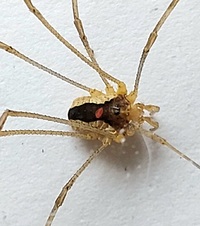 | Recorded by: Mark Basinger and Jim Petranka
Mitchell Co.
Comment: |
 | Recorded by: Mark Basinger, Jim Petranka, and Becky Elkin
Mitchell Co.
Comment: | 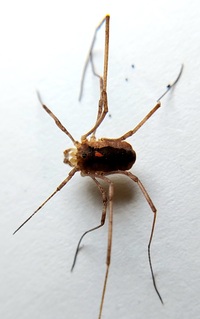 | Recorded by: Mark Basinger, Jim Petranka, and Becky Elkin
Mitchell Co.
Comment: |
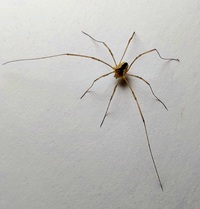 | Recorded by: Mark Basinger
Mitchell Co.
Comment: |  | Recorded by: Mark Basinger
Mitchell Co.
Comment: |
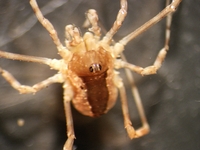 | Recorded by: Carol Tingley
Avery Co.
Comment: | 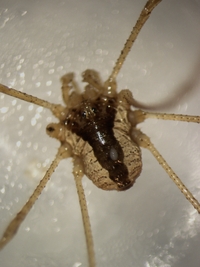 | Recorded by: Carol Tingley
Watauga Co.
Comment: On foliage of low shrubs |
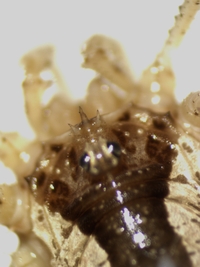 | Recorded by: Carol Tingley
Watauga Co.
Comment: On foliage of low shrubs | 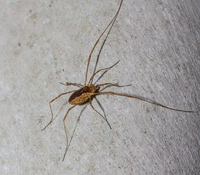 | Recorded by: Steve Hall and Bo Sullivan
Yancey Co.
Comment: Found on the side of a building; three collected |
 | Recorded by: Steve Hall and Bo Sullivan
Yancey Co.
Comment: Found on the side of a building; three collected | 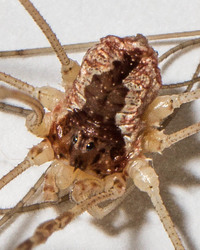 | Recorded by: Carol Tingley
Macon Co.
Comment: Found on low bushes |
|